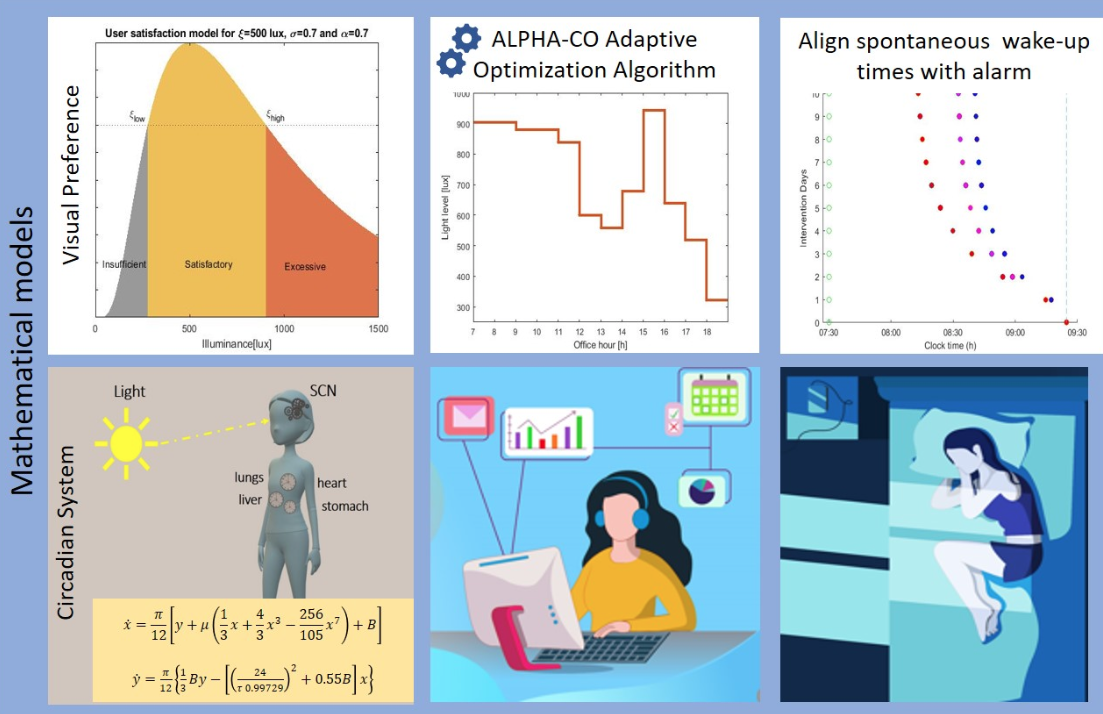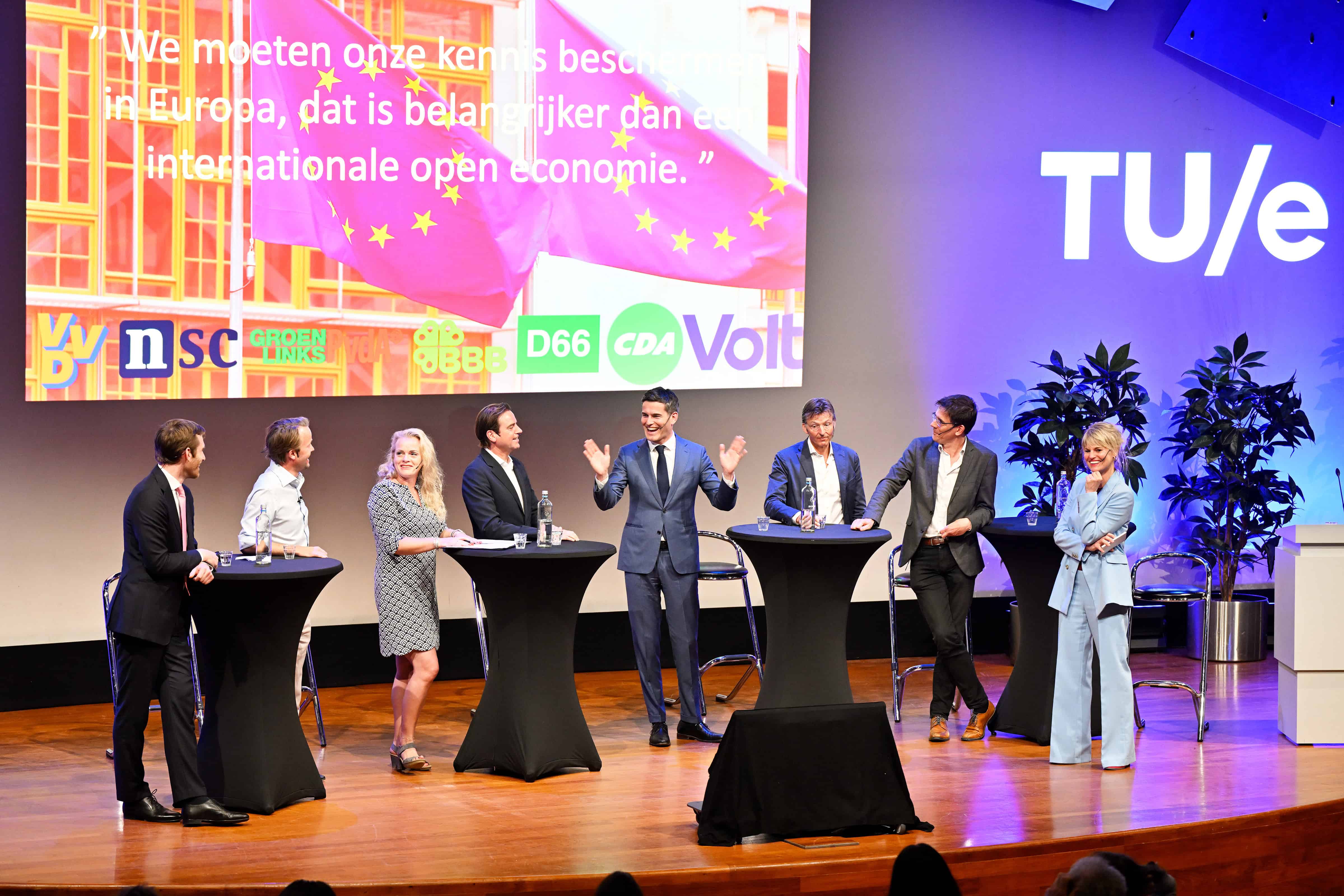
People and companies invest a lot of time and money into healthy lifestyles. Take the buying of organic food, for example. Or making sure you only eat limited amounts of fat, sugar, and salt. Exercise gets plenty of attention too. Also, nowadays, everyone is familiar with smartphone apps that count your daily steps so that you know whether you’ve reached your minimum walking distance for the day.
But you hardly ever hear the question as to whether you have had enough exposure to light so that your energy levels are high when you need them to be. Or if you have been exposed to too much light. Given how you tend to stare endlessly at your smartphone screen just before going to sleep. One thing is certain then: you will not sleep as soundly.
Algorithm
In order to solve this problem, Chara Papatsimpa, and Jean-Paul Linnartz, researchers from the Department of Electrical Engineering at the Eindhoven University of Technology ( TU/e), have designed an algorithm to light e.g. office environments in the healthiest possible way.
The reason is that human biorhythms are regulated by light. It is therefore only logical to take this into account when making a lighting plan for e.g. an office environment. So far, the only formal requirement for lighting is that it doesn’t cause any discomfort. Such as lighting that is too bright or too dim which makes reading difficult. And that lights are turned off when the office floor is vacated so that no energy is wasted.
“The model we used to create the algorithm comes from existing medical research at the universities of Manchester, Sydney, and Boston,” says the originally Greek researcher Papatsimpa. That was physically invasive medical research. Studies on the influence of light on people’s health and well-being have also been carried out. Blood samples were even taken as part of this. Data gained from these studies has been used to devise mathematical models that enable us to measure the state of biological clocks from minute to minute. We have now used those models to design an algorithm that allows you to adjust the lighting to each individual employee’s situation in an office.”
Lighting data on smartwatches
The idea is that employees wear a smartwatch or a fitness tracker such as a Fitbit. Or have a smartphone that collects data on how much they are exposed to light. This is then measured based on their activities. Once processed, this data can be transferred to a central computer. The computer then controls the lighting of that workspace. It aslo receives a signal if you are exposed to too much or too little light at some point.
“It won’t always be the case that all employees benefit from the same amount of light at any given time of day,” says Linnartz. For instance, one employee sits by the window, the other one has jetlag. “There are conceivable situations when the system opts to provide an amount of light that is a compromise between acute optimization (making you feel alert and fit there and then), and long-term optimization (allowing you to sleep soundly later on). It is also feasible that the system makes compromises in terms of the impact of lighting on the various people present in a particular room.”
There need not be a privacy issue when it comes to sending data concerning the activities of employees or other users of the light optimization system. The data is collected on the user’s mobile phone, smartwatch, or Fitbit. This means that it is not stored in a central system.
Hotels and airlines
At the moment there are no companies who are experimenting with the algorithm’s application. However, the researchers are holding discussions on this subject with former Philips subsidiary Signify.
But it could be interesting for companies where the protection of human biorhythm is particularly crucial. “Like aviation companies,” says Linnartz. “You can imagine having the lights adjusted in the VIP lounge and during a flight in order to help you get over your jetlag as quickly as possible.” The same goes for hotels. They can help their guests with a customized lighting plan to minimize time differences and accommodate shifts in their biorhythms.
In future, a lighting app may have the same function as a motion app does nowadays. Suppose you are streaming a series on a tablet late at night. Then this app could send you an alert. It will tell you that if you keep on watching, then you’ll end up with a shorter night’s sleep.
Neurological processes
This is important information. Because not enough sleep means that your brain has less time to process and archive information. As a result, you will probably be less productive over the following days.
“Knowledge about the influence of light on neurological processes in the brain has been out there for a long time already,” Papatsimpa concludes. “We are now linking this to smart devices so that it can actually be put to good use.”
Read the publication and watch the accompanying video summary of the TU/e study: ‘Personalized Office Lighting for Circadian Health and Improved Sleep (MDPI Sensors)‘ here.








